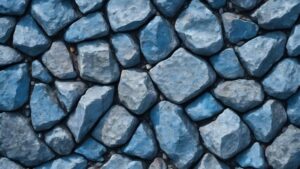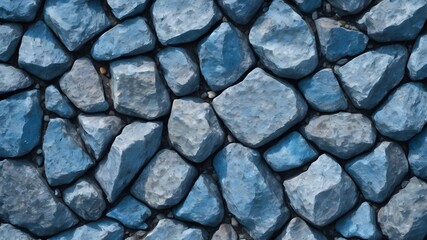Concrete stone facing is often used to construct exterior walls to craft a rustic or traditional aesthetic. This type of cladding is also commonly used inside the home as an accent wall.
Before installing the stone, a masonry stain can be added to color the concrete. These stains from iron oxide pigments are applied to the concrete surface before it sets. Click Here to learn more.
Concrete is a composite material consisting of cement (generally Portland cement) and other cementitious materials such as fly ash or slag cement, aggregate, (generally crushed rock such as limestone or granite, plus fine aggregate such as sand), water and chemical admixtures. When mixed and placed, the resulting material is hardened by a chemical process known as hydration. This reaction creates a strong, durable stone-like material that can be formed into many shapes and sizes.
Unlike natural stone, which requires extensive manufacturing energy, concrete is a green building product that is low-maintenance and can be recycled after use. It is also a non-toxic and environmentally friendly building material.
Manufactured stone veneer combines the durability of concrete with the appeal of natural, earthy stone. Its distinct texture catches the eye and invites touching, making it an attractive option for both garden walls and retaining wall applications. In addition to its aesthetics, concrete is a cost-effective alternative to other cladding materials such as wood or polyurethane.
While the physical characteristics of a stone veneer are important, the mortar used to install it is just as crucial for your project’s success. Use a pre-blended, polymer fortified Type S masonry mortar known as stone veneer mortar or SVM. Mix according to the manufacturer’s directions and allow to set up before laying your thin stone veneer units.
If your stone veneer becomes dirty or discolored, you can clean it using a hose or pressure washer and soft-bristled brush. Avoid using harsh chemicals, especially those containing acids or ammonia, as these can damage the surface of the stone.
Another way to add color to your manufactured stone is by applying a concrete stain or a masonry wash. A concrete stain is a solution made up of iron oxide pigment and water applied to the concrete before it has fully cured. By using this technique, the color is able to seep into all of the nooks and crannies of the stone, giving it a more natural appearance. Masonry stains are available in an array of earth-tone hues and can be used to restore existing concrete stone that is weathered or to add color to a new installation.
Durability
When choosing materials for your exterior, durability is an important factor. Both stone veneer and concrete stone are durable options for cladding your home. However, the type of stone you choose will impact how well your project performs over time and its ability to withstand weathering and other environmental factors.
Real stone is a natural material that can add elegance and value to your home over the years. While it may be more expensive, a natural stone wall surface will last for generations. Manufactured stone, on the other hand, can chip and expose its concrete interior as it wears. In addition, it can fade and deteriorate over time, diminishing its beauty.
Concrete stone is a construction material sprayed into molds to create decorative manufactured stone veneer (MSV). It looks similar to natural stone wall surfaces but is lighter and less expensive. MSV comes in various shades that mimic the earth tones found in nature to coordinate with or contrast with your siding and interior paint colors.
Both types of stone are available in a wide variety of shapes, sizes, and textures. Stone facing can be installed in a variety of ways to craft a distinctive look and add texture to your home. For example, it can be used to clad your chimney and accent walls or to frame a fireplace as a room’s focal point.
You can also use it to create a walkway or retaining wall. When it is installed properly, it will provide a durable and long-lasting surface that can withstand traffic and other harsh elements.
When it comes to installing stone facing, the most important step is to prepare the substrate. Before installing the stone, you should cover it with a weather resistant barrier such as tar paper or metal lath. The lath should overlap 1” both vertically and horizontally, and it should be covered with a stucco netting that stretches to the corners.
Once the stone is installed, it should be treated with a stain-resistant coating to prevent damage from water and sun exposure. This coating will help your stones resist fading and will make them easier to clean. In addition, you should avoid using cleaning products containing acids, ammonia, or bleach as they can strip the color of some types of stone.
Maintenance
Manufactured stone veneer (MSV) is a molded concrete product that imitates the appearance of natural stone and offers a number of benefits including cost, durability and design flexibility. Unlike real stone that is solid material through and through, MSV chips and exposes its concrete interior over time. It is also more susceptible to damage from everyday wear and tear, such as scratches, chipping, and dents.
Regardless of the type of stone, routine inspections can prevent unnoticed and expensive repairs or replacement. The most common maintenance issue is efflorescence, a white residue that appears on the surface of stucco, masonry, and brick walls. It results from water absorbing salt that is moved through the system by rain or other precipitation and deposits on the exterior of the wall. Some manufacturers use additives in their concrete products to help tie up the salt before it is deposited. Those with mortarless MSV can minimize the occurrence of efflorescence by keeping the wall dry and promptly addressing any moisture problems.
A protective coating can be applied to both a real and manufactured stone product to minimize the penetration of water into the stone and make it easier to clean. This product is usually silane or siloxane based and while it does not make the stone waterproof or leakproof, it can help keep the stones looking newer longer by repelling dirt and stains. However, it is important that the product be tested in an inconspicuous area to ensure it does not change the color of the stone or affect its sheen.
Another simple and effective way to help protect stone veneer is to apply a breathable water repellent to the back of the stone when it is installed. This will not only help to keep the stone looking good, but it will also make cleaning your home exterior a breeze. Just be sure to test the product on an inconspicuous area and to follow the manufacturer’s instructions for application. Lastly, it is a good idea to cover the entire installation site with a weather resistant barrier such as tar paper or galvanized metal lath before installing stone veneer. This will prevent any water penetration from damaging the backing of the veneer and will also allow you to inspect the project if there are any issues with the structure of the wall.
Design
Concrete stone veneer can be used in a variety of ways to add visual interest and value to your home. It can be used on chimneys, fire features, retaining walls, walkways and interior applications such as archways. Stone walls can also act as a buffer to noise and can create a beautiful backdrop for gardens, pools or other landscaping features.
It is important to understand how stone works before installing it. Like any material, if not properly installed it can fail to hold up under the stresses of construction and weathering. A good quality installation includes the proper waterproofing system to prevent water penetration and protect the substrate below the stone.
In addition to the waterproofing, a well-designed stone wall requires the use of proper materials for facing and the proper detailing of joints and connections. The correct selection and application of these materials will ensure that your stone wall will last for the life of the project.
Manufactured stone is a slurry of Portland cement, aggregates and iron oxides baked in textured molds to appear like real stone. It is a cost-conscious alternative to real stone and comes in a wide range of textures and color options.
The thickness of the stone is important as it will determine how much of a thermal mass it acts as and how well it will insulate your home. Depending on your climate, you may need to place additional insulation or masonry cladding over the face of the stone to reduce energy consumption.
A well-designed stone wall will include expansion and contraction joints. These are designed to accommodate the movement of different parts of the wall during temperature changes. An expansion joint compresses and a contraction joint expands as the panels change size.
A high-quality manufactured stone wall will contain a bonding agent to strengthen the seams and prevent water leaks. The seams should be inspected regularly and any damaged or deteriorated sections of the stone should be replaced. To prevent moisture from seeping into the walls, a weather resistant barrier should be installed over the entire surface of the building. A galvanized metal lath or 1″ woven wire stucco netting should be used, and the sheathing should overlap 4″ in shingle fashion and extend 16″ around all corners.

